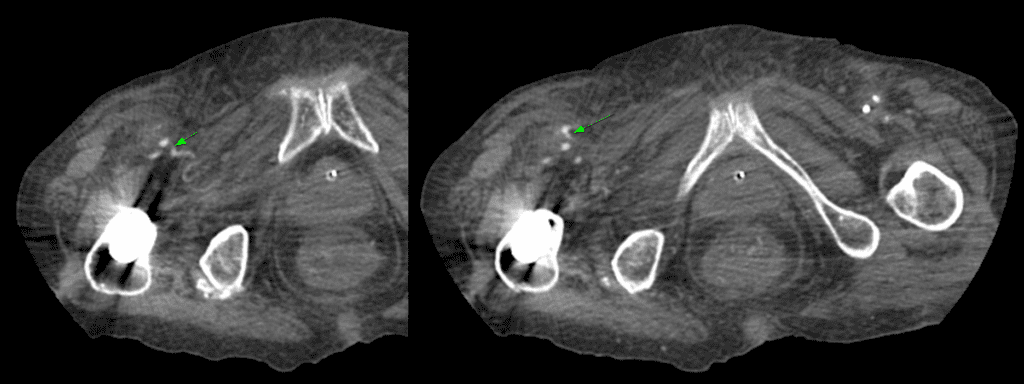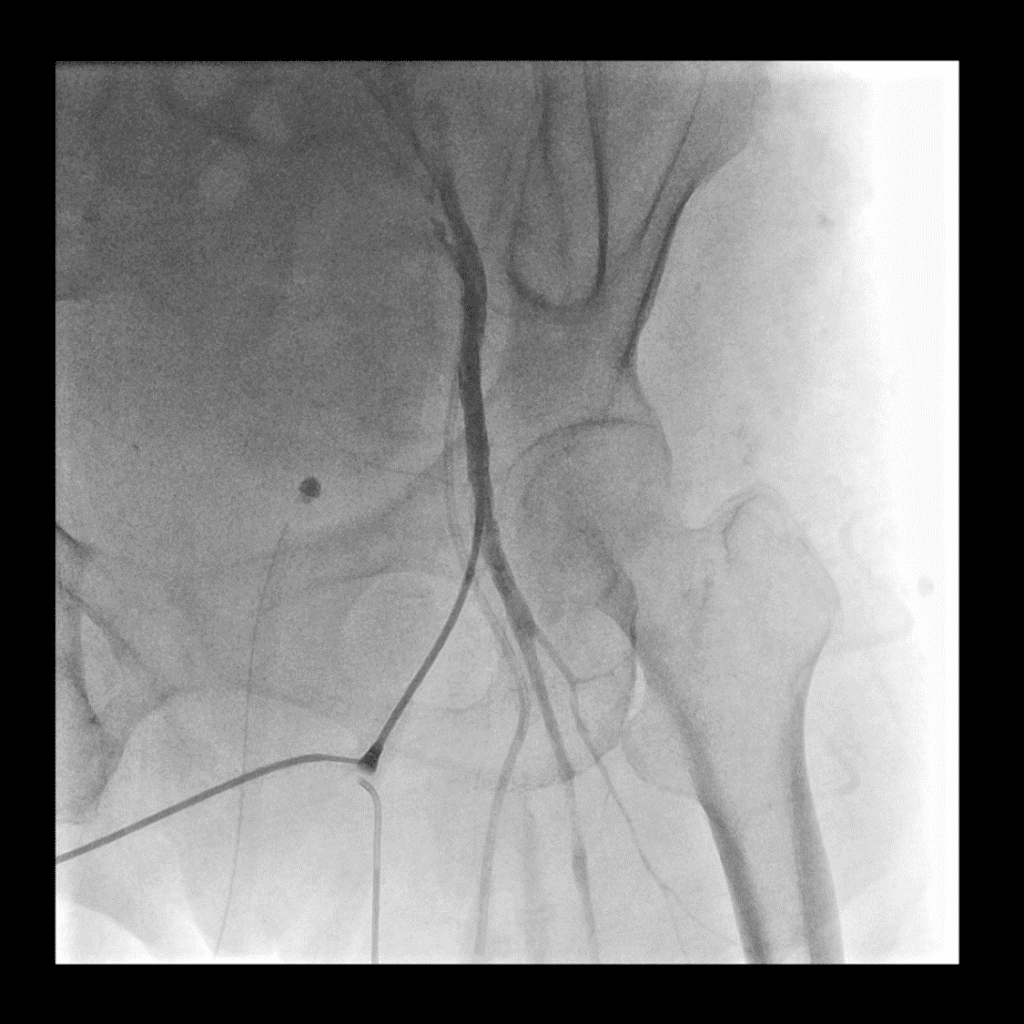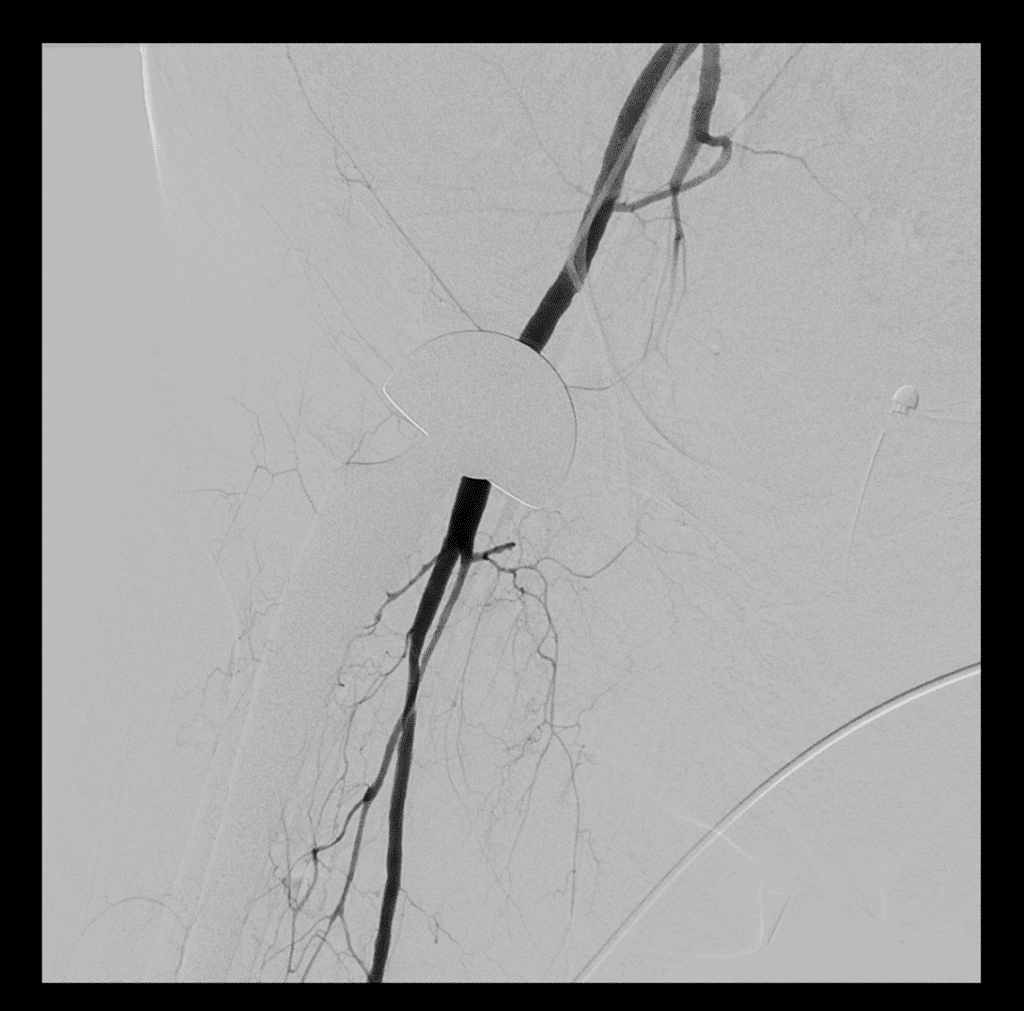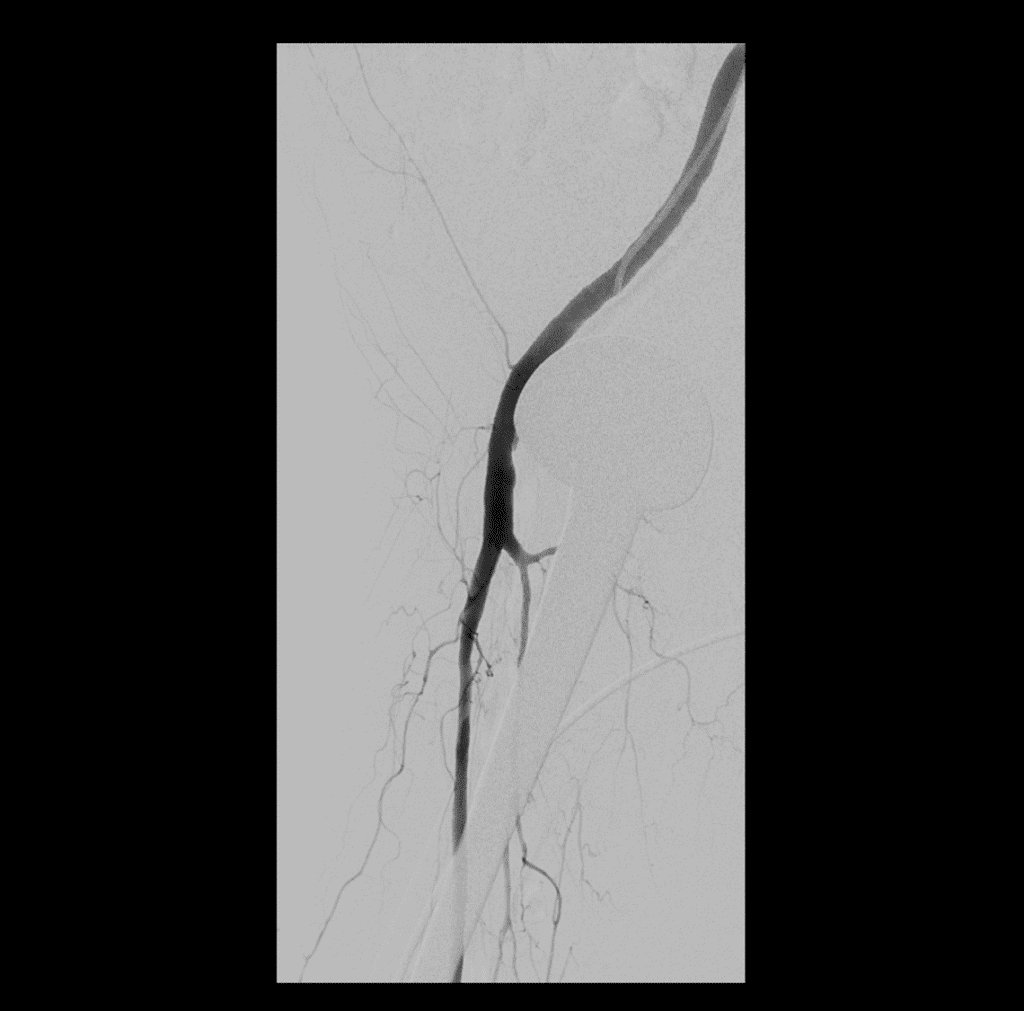Iatrogenic bleeding of deep femoral artery while insertion of A-line

However, due to the small diameter of the Deep Femoral Artery (2.8mm), stent graft placement was ruled out as an option. Stent graft insertion typically requires a minimum diameter of 6mm or more, and even if the diameter were around 6mm, it’s a frequently folded location, which increases the risk of stent graft damage.
Therefore, the decision was made to proceed with embolization by using coils or a vascular plug to completely exclude the Deep Femoral Artery, as this method is more feasible in preventing further bleeding.






